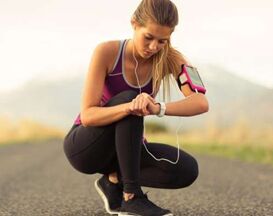想预防骨质疏松 就每天锻炼几分钟
|
Many people think that getting fit means devoting your life to the gym and slogging it out for hours. And unsurprisingly, that can be pretty off-putting. But increasingly we're realising that short workouts can be much more effective than long ones, if you just know what to do. It turns out that just a minute's exercise a day can have a hugely beneficial impact on your health. According to a study by the Universities of Exeter and Leicester, women who do 60-120 seconds of high-intensity weight-bearing exercise a day have four per cent better bone density than those who do less than a minute.
Women who exercise for over two minutes have even stronger bones, with density six per cent higher than those who do under a minute. After the age of 30, people tend to lose more bone mass than they gain, and the higher your bone density, the lower your likelihood of developing osteoporosis. You're also less likely to have bone fractures in old age. The study was conducted on over 2,500 female participants, and it's women who are most at risk of osteoporosis, with bone density declining significantly after the menopause. According to the International Osteoporosis Foundation, a tenth of women aged 60 are affected by osteoporosis, and this rises to two-thirds of women aged 90. What's more, one in three women over the age of 50 and one in five men of the same age will suffer from osteoporotic fractures. But further research needs to be done to work out how best one should undertake exercise in order to improve bone density the most. "We don't yet know whether it's better to accumulate this small amount of exercise in bits throughout each day or all at once, and also whether a slightly longer bout of exercise on one or two days per week is just as good as one to two minutes a day," said lead author Dr Victoria Stiles. "But there's a clear link between this kind of high-intensity, weight-bearing exercise and better bone health in women." To reach their conclusions, the researchers asked their participants to wear activity monitors for a week and then compared this data to measurements of their bone health. |









